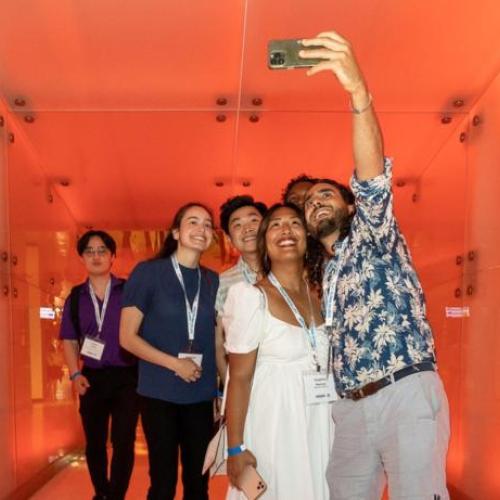April 19, 2019 | Research
U of T researchers help charity build better, more inclusive playgrounds
By Jelena Damjanovic

Children play on accessible playground equipment built through an initiative by Canadian Tire Jumpstart Charities in Charlottetown (photo courtesy of Canadian Tire Jumpstart Charities)
Researchers from the University of Toronto will play a key role in a national charity’s roll out of accessible playground facilities in cities across Canada.
The playgrounds, built by Canadian Tire Jumpstart Charities, feature traditional play components modified for children of all abilities. That includes features like double-wide ramps for wheelchair access and roller slides to eliminate possible static electricity build-up for those who wear hearing devices.
The first one opened in Charlottetown last fall.
Two U of T experts will evaluate the playgrounds to improve future designs
“We push our children to play outdoors, tell them about the importance of being in nature for their physical and mental health, but these opportunities are not available for all children,” says Kelly Arbour-Nicitopoulos, an assistant professor in the Faculty of Kinesiology & Physical Education who specializes in disability and physical activity.
Along with Ron Buliung, a professor of geography at U of T Mississauga, Arbour-Nicitopoulos will co-lead a team of experts tasked with evaluating Jumpstart’s playgrounds – one of which is scheduled to be built in every Canadian province and territory over the next five years. The U of T-led study will kick off its evaluation this spring once five of the playgrounds are up and running. Another eight playgrounds will be evaluated between this summer and spring of next year.
The team’s findings will help stakeholders understand how well the spaces work for children and their families, and if there are elements of the design that can be improved.
“The goal is to be able to do this research on an ongoing basis, so that we can inform the design of future playgrounds as they are developed for other provinces and territories,” Arbour-Nicitopoulos says.
Currently, families have to figure out on their own how to make playgrounds work
That’s potentially welcome news for families of children who are unable to enjoy playground spaces designed based on traditional assumptions about how children develop, move and play.
For Buliung, there is a personal connection to the project. His daughter, who uses a wheelchair, was born with spinal muscular atrophy type 2, a genetic neuromuscular disease that causes progressive muscle weakness.
“We can’t just get in the car and go to a playground and play like other families,” Buliung says. “We have to make the space work for us and that’s not always easy.”
The end goal is making all municipal playgrounds inclusive
Arbour-Nicitopoulos and Buliung hope their findings will provide guidelines on how to create inclusive playground spaces for children of all abilities. The end goal, both of them agree, is to eventually modify and adapt all municipal playgrounds to make them inclusive for a range of abilities.
“If we can determine that these accessible playgrounds make sense and work for families, then we can begin to look at how to diffuse this knowledge and design practices to other playgrounds across the city,” says Buliung.
“Instead of building islands of and for disability, let’s create inclusive opportunities for play for all children across our cities.”

